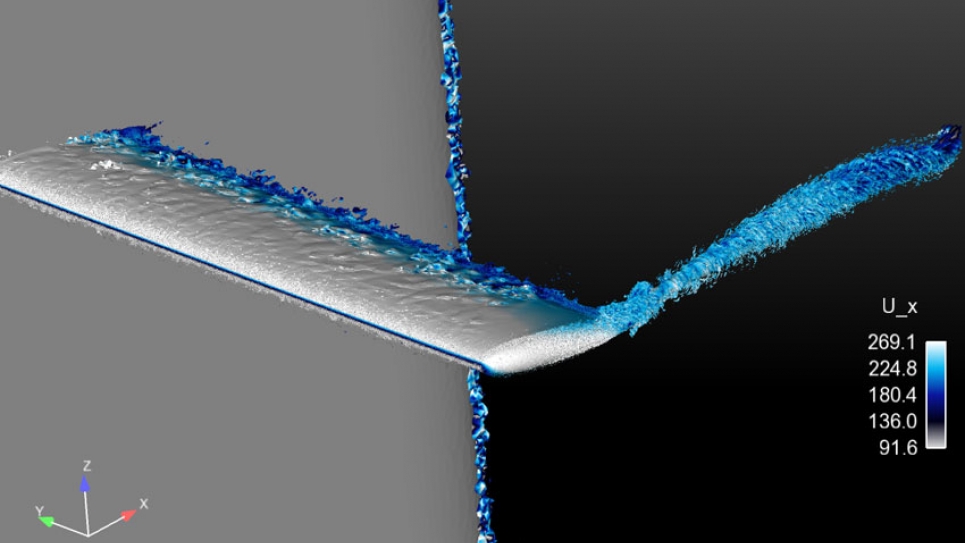
Towards Predictive Exascale Wind Farm Simulations
Greater use of wind resources for electric power generation — reaching 30% of U.S. electrical supply — will have profound impacts: strengthening U.S. energy security through greater diversity in supply, providing cost-competitive electricity to key regions, reducing greenhouse-gas emissions, and reducing water used in thermo-electric power generation. However, a key challenge to wide-scale deployment of wind energy in the utility grid without subsidies is predicting and minimizing plant-level energy losses, which are currently estimated to be 20% in relatively flat areas and much higher in regions of complex terrain. Current simulation tools and methods for modeling wind plant performance fall far short because of insufficient model fidelity and inadequate treatment of key phenomena, combined with a lack of needed computational power necessary.
Objectives of this research are to advance both the development of a next-generation wind farm simulation capability and also the understanding of how this capability can be applied to important science questions challenging the wind energy community. The team has three large-scale simulation activities it deems as necessary steps on the path to exascale-class wind farm simulations: demonstrate time-to-solution improvements for atmospheric boundary layer simulations on a next-generation platform; demonstrate and evaluate improvements to linear-solver performance for large-aspect-ratio meshes; and perform “hero”-type simulations of a fully resolved wind turbine — expected to be the highest-fidelity turbine simulations to date.